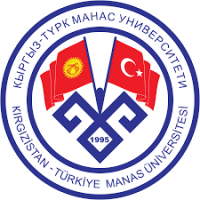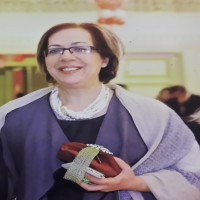Research Article
Aim & Scope
1. MJSS is an international peer-reviewed and refereed journal. The journal aims to promote the researches in the field of social sciences and provide an intellectual platform for the scientists.
2. MJSS aims to become a journal that makes significant contribution to the academic world.
3. MJSS is published to reveal in a scholarly manner the cultural richness of Central Asian countries, particularly Kyrgyzstan, and Turkic world; the cultural and social issues in the Turkic world, as well as current researches at micro and micro levels.
4. MJSS with its open access features, aims to be indexed in more databases, and provide easy and limitless access to scholars and readers.
5. MJSS' editorial team carefully evaluates each uploaded article and sends it to the reviewers. The peer-review process is in full confidentiality. After the peer-review process, articles will be queued for publication.
6. MJSS aims to increase the citation impacts of articles.
1. Submitted papers to MJSS should be original to fill a gap in the related fields. By evaluating previously published studies, papers should explore new aspects of an issue. MJSS publishes theoretical and applied researches.
2. Manuscripts should not be published before nor be under editorial consideration in any other journal. Research papers presented at academic conferences or symposiums can be accepted for the evaluation process, if authors clearly state this.
3. Authors take full responsibility for their papers.
4. Author(s) should not submit the same article to more than one journal at the same time.
5. The peer-review process is confidential and not disclosed to the third parties. All submitted papers are evaluated objectively.
6. The chief editor and field editors conduct the peer-review process confidentially. They evaluate each article objectively regardless authors' religious belief, language, race, nationality, gender, status, and institutional relationship.
7. The chief editor and field editors of the journal investigate if the paper plagiarized, published previously in any other journal or under editorial consideration elsewhere. If such situation arises, the editor has the right not to publish the article.
8. The word format of the article during uploading to the system should not include any personal information about authors.
Publishing issues:
Labor Economics, Literature, Education, Psychology, Fine Arts, Law, Economics, Philosophy, Divinity, Local Governments, Public Economics, Media and Communication, Management, Accounting and Finance, Marketing, Psychology, Health Management, Political Sciences and Public Administration, Sociology, Sport Sciences, History, Tourism, Turkish Language, International Economics, International Relations, Production Management, Management Information Systems, Management and Organization.
Author Guidelines
MANAS Journal of Social Research Writing Rules
Authors should pay attention to the following spelling rules:
1. In order to submit manuscripts to MANAS Journal of Social Research, authors must register to the DergiPark article tracking system and upload articles using this system. Registration, article uploading and other details are explained on dergipark.gov.tr website.
2. MANAS Journal of Social Research article sent plagiarism detection software from (Turnitin, iThenticate etc.). Passing of a document that references including more than 30% similarity to and signed by the authors Ethical Responsibility Statement and Copyright Form's must be filled.
3. The author or authors are responsible for the manuscripts submitted to MANAS Journal of Social Research.
4. It is assumed that all authors who submit an article to MANAS Journal of Social Studies accept all responsibilities in the MANAS Journal of Social Ethics.
5. MANAS Journal of Social Studies accepts articles in Turkish, Kyrgyz, English, Russian and other Turkish dialects. In articles sent with an alphabet (Cyrillic alphabet) other than Latin alphabet (in Kyrgyz, Russian and other Turkish dialects), the author's name and tag, article title, abstract and bibliography must be written in Latin alphabet.
6. Articles written in Kyrgyz, Russian and other Turkish dialects must contain English Title, Abstract and Key Words and References sections. In addition, at the end of the sources written in Cyrillic alphabet, references must be given in Latin letters. This is particularly important for indexes and screening of the article.
GENERAL
1. The authors should design their articles using "Template" file.
2. Authors should not include the author information in the article word file when submitting the article, but should include the author/authors and the information as a separate word file as in the “Author Information” file.
3. If the manuscript is accepted, the author (s) should upload the manuscript by adding the author information to the “accepted articles' Template” file.
4. Manuscripts should not include details such as page numbers, headers and footers.
5. The spelling guide of the Turkish Language Institution should be taken as the basis for the articles in Turkish except for the special cases required by the article or subject in terms of spelling and punctuation.
6. Articles (including bibliography and abstracts) should be prepared for a maximum of 25 pages.
7. During the first application, the referees' evaluation process of the articles that do not comply with the journal writing rules is strictly not initiated. In this process, the applicant is given a maximum of 15 days to make the necessary corrections. In this period, articles that are not adjusted according to the journal writing rules will be deleted from the system.
8. Authors should enter the journal's system from time to time in order to learn the opinions of the referees and editors. Since they can see the corrections given by the referees through the system, they should make the necessary corrections and upload the final version of the article back to the system.
9. The suggestions of the referees and editors should be corrected and uploaded to the system within 30 days. The articles that are not corrected within this period will be deleted from the system.
10. In articles, “Garamond” typeface should be used. For articles that require a special font, the font used must be enclosed with the article.
COVER PAGE
1. The title of the manuscript in the original language should be written as left-aligned, bold and 16 points ilk with the first letters in capital letters and the others in small letters.
2. Author or authors’ information should be written as left-aligned, normal and 16 points as in the example (Kürşad YILMAZ).
3. The abstract should be prepared with the aim, method and findings of the article and should not exceed 200 words. Abstract should be written in 10 point and single line spacing.
4. Key words the article to reflect the content of "at least 3 and up to 5" word and Turkish should be written.
5. The title of the article in the second language should be written as left-aligned, bold and 12 points ilk with the first letters in capital letters and the others in small letters.
6. The abstract should be designed to include the purpose, method and findings of the manuscript and should not exceed 200 words. Abstract 10 font size and single line spacing.
7. Key Words should be written in minimum 3, maximum 5” words and English in order to reflect the content of the article.
8. “Single line spacing should be used everywhere on the cover page.
EXTENDED SUMMARY
1. Each article submitted to the journal should have a WIDE SUMMARY of 750-1000 words after the “Bibliography” section. If the article is in Turkish, the abstract should be in English and English in Turkish.
2. Broad abstracts should not contain subtitles (for example, INTRODUCTION), and should be single columns and of the specified length.
3. Large abstracts “Garamond” font, 11 font size, single line spacing, before and after 6 pt spacing” should be written.
TITLE SYSTEM
1. Research articles should include “Introduction, Methods, Results, Conclusions, Discussion and Suggestions” sections.
2. Titles can be organized according to content in articles written in compilation, conceptual analysis or other types.
3. Only the first letters of each word of the titles in the article should be capitalized and no other formatting should be included.
4. Section titles should be written with “Centered, Bold, 12 font and Garamond typeface and the first letters should be capitalized.
5. Section titles should be written with “Left, bold, 11 font and Garamond typeface and the first letters should be capitalized.
6. The subtitles of the section titles should be written re-entrant from the beginning of the paragraph, Left-aligned, Bold, italic, 11 font and Garamond typeface and the first letters should be capitalized.
7. Titles should not be numbered.
|
Introduction
Method Universe-sample Data Collection Tools Leadership Behavior Scale
Organizational Justice Scale Data Analysis
Results
Discussion, Conclusion and Suggestions
References |
TEXT
1. Top article page layout, the right and left sides of 2.5 cm, bottom 1.5 cm gap should be left.
2. The text of the article should be written with “Garamond” font, 11 font size, single line spacing before and after 6 pt spacing.
3. The text should be written as a single column.
4. Each paragraph should consist of at least three sentences.
5. Paragraphs should start with 0,75 cm indentation and no spaces should be left between the paragraphs.
6. When it is necessary to emphasize in the text, italic highlighting should be done, not bold or underlined.
7. In cases where footnotes should be used in the articles, they should be written in Garamond typeface with 9 points and single line spacing.
8. Some figures in the text are: 4.22; p<.05; 66.3%
9. Arithmetic mean and standard deviation value reporting example: (M=4.22, S=0.86)
· t-test analysis reporting example: [t(355)=1.02, p> .05]
· Reporting example for Mann-Whitney U test: [χ2(2)=.60, p>.05]
· Reporting example for ANOVA: [F(3-422)=7.11, p<.05]
· Reporting example for Kruskal-Wallis H test: [X2(4)=4,15, p>.05]
· Reporting example for correlation analysis: [r=.55, p<.05]
TABLES AND FIGURES
1. Tables and figures should be prepared in a ready-to-publish format and given in the text.
2. In the tables, the title should be written as in the following example. It should be placed at the top of the table, 11 point and centered.
Table 1. Findings of the Relationship between Self-Esteem and Religious Asylum in Coping with Stress
3. The width of the tables should not exceed 16 cm. The width of the tables, which may be smaller, should also be set to 16 cm.
4. Garamond typeface, 9 point and single line spacing should be used in the manuscripts used in the tables.
5. Vertical lines should not be used in tables.
6. The thickness of the top cap and bottom border in the tables”1½ pt” should be.
7. For some particular table format that can be used in quantitative research "Sample Table" to file the water to examine. Be sure to use these tables in your articles.
8. In the figures, the title should be written as in the example below. The title should be placed under the figure and should be written in 11 pt and centered.
Figure 1. Self-Esteem with Stress Coping Attitudes between Relational Values
BIBLIOGRAPHY CONNECTOR AND LIBRARY LIST
1. References should be used in references in the text.
2. “&” Should be used in bibliography conjunctions in English articles, “and should be used in in -text citations, and “&” should be used in bibliography list.
3. Article bibliography should be entered in accordance with APA bibliography standards. References should be in the text as in the example (Yılmaz, 2018, p. 166).
4. At the end of each article there must be a bibliography list.
5. Bibliography list should be written in Garamond font, 10 point and single line spacing.
6. The second and subsequent lines of the bibliography should start with a 0.75 cm indentation.
7. If a reference is made to a particular work in a paragraph and it is necessary to mention this work again in the same paragraph, it is sufficient to give the surname of the author; there is no need to include the date information. If the second reference in the same paragraph is a different work of the same author, date information should be added.
Sample:
According to Fuller (1982), information is growing exponentially today, and the time attributed to the half-life of information is becoming ever shorter. Fuller states that until the 1900s, knowledge has doubled every century that the time has fallen to 25 years at the end of the Second World War, and that today, knowledge has grown exponentially every 18 months.
Bibliography Examples for Turkish Articles
When citing references in the text, citations from other works should be indicated with bibliography. In the bibliography link, the surname of the author, date of publication and page number should be given.
1. Single author bibliography connector:
(Yilmaz, 2008, p. 122), according to Yilmaz (2008, p. 122)
2. Bibliography link with two authors:
(Yılmaz, & Altınkurt, 2009, p. 12) or according to Yılmaz and Altınkurt (2009, p. 12)
3. When referring to studies with three, four and five authors, only the surnames of all authors are given in the first reference in the text. For other references, the first author's surname and the others should be added. Articles written in English refer to publications with three, four or five authors, and et al. The expression should be used.
Sample
First posting
(Aircraft, Kurbanoglu, Sencan, & Dogan, 2011, p. 15)
Second and subsequent references
(Plane et al., 2011, p. 18)
4. When referring to studies with six or more authors, only the surname of the first author is indicated.
Sample
Tag
Dougherty, M., Meyer, E. T., Madsen, C., Van den Heuvel, C., Thomas, A., & Wyatt, S. (2010). Researcher engagement with web archives: State of the art. Report. London: JISC. Access address: http://ierepository.jisc.ac.uk/544/
Sending
(Dougherty et al., 2010, p. 44)
5. If more than one author's work is cited in the same year, the manuscript should be listed as follows:
(Yılmaz, 2009a; 2009b)
6. Multiple references within the same parentheses should be in alphabetical order according to the first author's last name and separated by semicolons.
(Brockner, Siegel, Daly, Tyler, & Martin, 1997, p. 33; Deluga, 1995, p. 22; Francisco, 2000, p. 44; Job, 2000, p. 55; Podsakoff, MacKenzie, Moorman, & Fetter, 1990 , p. 11)
7. Abbreviations related to institutions should be given in the first place and used as abbreviation in the following sections:
Council of Higher Education (YÖK) - (Council of Higher Education [YÖK], 1998)
Ministry of National Education (MEB) - (Ministry of National Education [MEB], 2000)
Ministry of National Education (MoNE) - (Ministry of National Education [MoNE], 2000)
8. Legal texts should be presented as follows:
(Basic Law of National Education, 1973)
9. Cited in:
(Dewey, 1961 Cited in: Yilmaz, 2018, p. 77)
10. Authors with the same surname:
If there are two or more authors with the same surname in the bibliography, the first letter of the authors' first name in the citation is used in all references even if the years are different.
Sample
Tallies:
Yilmaz, A. (2009). Public policies and public library-emergent literacy relationship in the USA. Knowledge World, 10, 80-94. Access address: http://www.bd.org.tr/
Yılmaz, B., Köse, E., & Korkut, Ş. (2008). A research on reading habits of Hacettepe University and Bilkent University students. Turkish Librarianship, 23, 22-51. Access address: http://www.tk.org.tr/
References: As mentioned in B. Yılmaz, Köse and Korkut (2008) and A. Yılmaz (2009) …….
Bibliography Examples for English Articles
When citing references in the text, citations from other works should be indicated with bibliography. In the bibliography link, the author's surname, the publication date of the work and the page number should be given in the direct references.
1. Single author bibliography connector:
(Yılmaz, 2008, p. 122) or “according to Yılmaz (2008, p. 122)
2. Two-author bibliography connector:
(Yılmaz, & Altınkurt, 2009, p. 12) or “According to Yılmaz and Altınkurt (2009, p. 12)”
3. When referring to studies with three, four and five authors, only the surnames of all authors are given in the first reference in the text. For other references, the first author's surname and the others should be added. Articles written in English refer to publications with three, four or five authors, and et al. The expression should be used.
Sample
First posting
(Plane, Kurbanoglu, Sencan, & Dogan, 2011, p. 15)
Second and subsequent references
(Plane et al., 2011, p. 18)
4. When referring to studies with six or more authors, only the surname of the first author is indicated.
Sample
Tag
Dougherty, M., Meyer, E. T., Madsen, C., Van den Heuvel, C., Thomas, A., & Wyatt, S. (2010). Researcher engagement with web archives: State of the Art. Report. London: JISC. Retrieved from: http://ierepository.jisc.ac.uk/544/
Sending
(Dougherty et al., 2010, p. 44)
5. If more than one author's work in the same year is cited, the manuscripts should be listed as follows:
(Yılmaz, 2009a; 2009b)
6. Multiple references within the same parentheses should be in alphabetical order according to the first author's last name and separated by semicolons.
(Brockner, Siegel, Daly, Tyler, & Martin, 1997, p. 33; Deluga, 1995 , p. 22; Francisco, 2000, p. 44; Job, 2000 , p. 55; Podsakoff, MacKenzie, Moorman, & Fetter, 1990, p. 11)
7. Abbreviations related to institutions should be given in the first place and used as abbreviation in the following sections:
Council of Higher Education (YÖK) - (Council of Higher Education [YÖK], 1998)
Ministry of National Education (MEB) - (Ministry of National Education [MEB], 2000)
Ministry of National Education (MoNE) - (Ministry of National Education [MoNE], 2000)
8. Legal texts should be presented as follows:
(Basic Law of National Education, 1973)
9. Cited in:
(Dewey, 1961 Cited in: Yilmaz, 2018, p. 77)
10. Authors with the same surname:
If there are two or more authors with the same surname in the bibliography, the first letter of the authors' first name in the citation is used in all references even if the years are different.
Sample
Tallies:
Yilmaz, A. (2009). Public policies and public library-emergent literacy relationship in the USA. Knowledge World, 10, 80-94. Access address: http://www.bd.org.tr/
Yılmaz, B. , Köse, E., & Korkut, Ş. (2008). A research on reading habits of Hacettepe University and Bilk ent University students. Turkish Librarianship, 23, 22-51. Access address: http://www.tk.org.tr/
Reference in the text:
As mentioned in B. Yılmaz, Köse and Korkut (2008) and A. Yılmaz (2009) …….
Examples of APA Usage in the Bibliography List
Single Author Books / Structure for one author (Book)
Aydin, A. (2004a). History of thought and human nature. Istanbul: Gendaş Publications.
Organ, D. W. (1988). Organizational citizenship behavior: The good soldier syndrome. Canada: Lexington Books.
Single Author Translated Books / Structure for one author (Translated Book)
Rosen, R. H. (1998). Human management (Translate: G. Bulut). Istanbul: MESS Publications.
Two Authors Books / Structure for two authors (Book)
Lightning, A., & Simsek, H. (2000). Qualitative research methods in the social sciences. Ankara: Seçkin Publishing.
Bryk, A. S., & Schneider, B. (1996). Trust in schools: A core resource for improvement. New York: Russell Sage Foundation.
Two Authors Book Translations / Structure for two authors (Translated Book)
Cooper, R., & Sawaf, A. (1997). Emotional intelligence in leadership (Translate: Z. Ayman & B. Sancar). İstanbul: Sistem Publications.
Three Authors Books / Structure for three authors (Book)
Köklü, N., Büyüköztürk, Ş., & Bökeoğlu, Ö. (2006). Statistics for social sciences. Ankara: Pegem A Publishing.
Hoy, W. K., Tarter, C. J., & Kottkamp, R. B. (1991). Open schools-healthy schools. Newbury Park, CA: SAGE.
Editor Books / Structure for edited books
Memduhoglu, H. B., & Yilmaz, K. (Edt.) (2010). Turkish education system and school administration (2nd Edition). Ankara: Pegem Academy Publishing.
Hoyer, W. K., & Miskel, C. G. (Eds.). (2003). Studies in leading and organizing schools. Greenwich : Information Age Publishing.
Section Editor Books / Structure chapter in edited books for
Plateau, A. (2009). Philosophical foundations of education. H. B. Memduhoğlu & K. Yılmaz (Edt.), Educational sciences (pp. 19-43) . Ankara: Pegem Academy Publishing.
Hoyer, W. K., & Tschannen-Moran, M. (2003). The conceptualization and measurement of faculty trust in schools: The omnibus t-scale. In W. K. Hoy & C. G. Miskel (Eds.), Studies in leading and organizing schools (pp. 181-208). Greenwich: Information Age Publishing.
Book in Translation Section / Structure for chapter books translated in
Finger, J., & Bamford, B. (2010). Ölçme değerlendirmenin yönetimi (Translate: K. Yilmaz & E. Oguz). The classroom management strategies teacher guide [The classroom teacher's book of management essentials] (Translate Edt: T. Karaköse) (pp. 194-243). Ankara: Nobel Publishing.
Book Reviews / Book Reviews
Dent-Read, C., & Zukow-Goldring P. (2001). Is modeling knowing? [Review of the book Models of cognitive development by K. Richardson]. American Journal of Psychology, 114, 126-133.
ARTICLE (1 AUTHOR) / ARTICLE (ONE AUTHOR)
If there is a DOI number, the reference should be included.
Turner, S. J. (2010). Website statistics 2.0: Using Google Analyze tics to measure library website effectiveness. Technical Services Quarterly, 27, 261-278. doi : 10.1080 / 07317131003765910
If the DOI number is not available but the content has been accessed online, the URL of the main page of the periodical must be provided.
Yilmaz, B. (2005). The process of restructuring of the public administration and public libraries in Turkey. Turkish Librarianship, 19, 56-77. Access address: http://www.tk.org.tr/index.php/TK
Journal articles without DOI number
Al, U., & Dogan, G. (2012). Citation analysis of Hacettepe University Department of Information Management. Turkish Librarianship, 26, 349-369. Access address: http://www.tk.org.tr/
Journal articles in printed format without a DOI number in which the title is translated into English
Al, U., & Dogan, G. (2012). Hacettepe University Information and Document Management Division thesis of s citation analysis [Citation analysis of Dissertations completed at Hacettepe University Department of Information Management]. Turkish Librarianship, 26, 349-369.
Article (from 2 to 7 authors) / Article (7 authors from 2 authors)
Nielsen, B. G., & Borlund, P. (2011). Information literacy, learning, and the public library: A study of Danish high school students. Journal of Librarianship and Information Science, 43, 106-119. doi : 10.1177 / 0961000611408643
Bökeoğlu, Ö., & Yilmaz, K. (2008). Teachers' opinions about organizational trust in primary schools. Educational Administration in Theory and Practice, 14(54), 211-233.
Oguz, E., Yilmaz, K., & Stone, M. (2007). Supervision beliefs of primary school supervisors and primary school administrators. Manas Journal of Social Sciences, 17, 39-52.
Hoyer, W. K., & Tarter, C. J. (2004). Organizational justice in schools: No justice without trust. International Journal of Educational Management, 18(4), 250-259.
Smith, C. A., Organ, D. W., & Near, J. P. (1983). Organizational citizenship behavior: Its nature and antecedents. Journal of Applied Psychology, 68(44), 653-663.
Article (8 or more authors) / Article (8 authors and more)
Wolchik, S. A., West, S. G., Sandler, I. N., Tein, J. Y., Coatsworth, D., Lengua, L., ... Griffin, W. A. (2000). An experimental evaluation of theory-based mother and mother-child programs for children of divorce. Journal of Consulting and Clinical Psychology, 68, 843-856.
Proceedings Published in Proceedings:
Yılmaz, K. (2015). Reflections on values education: Budgeting research. In A. Güvenç & M. Saygın (Edt.), Educational next quest: from yesterday to today in Turkey skills, ethics and values education international symposium (pp. 79-100). Bartin, Turkey: Atatürk Research Center Publication.
Schneider, R. (2013). Research data literacy. In S. Kurbanoğlu vd. (Edt.), Communications in computer and information science: Vol. 397. Worldwide communalities and challenges in information literature research and practice (pp. 134-140). Cham, Switzerland: Springer. doi: 10.1007 / 978-3-319-03919-0
Papers not published in the proceedings or published as abstract:
Agaoglu, E. , Altinkurt , Y., Yilmaz, K., & Karaköse , T. (2010, May). Opinions of school administrators and teachers about the competencies of school administrators. Presented at the 5th National Education Management Congress, Gazi University Faculty of Education - EYEDDER. Antalya.
Turan, S. (2006, April). Paradigmatic transformations in educational administration (nothing transforming). Turkey in Educational Administration and Control Problems and Solutions Meeting in the papers presented. Ankara University Faculty of Educational Sciences - EYEDDER. Ankara.
Cinar, M. , Dogan, D., & Seferoglu, SS (2015, February). Digital tools in education: An assessment on Google classroom practice [Abstract]. Paper presented at the Academic Informatics Conference, Anadolu University, Eskisehir. Access address: http://ab2015.anadolu.edu.tr/index. php? menu = 5 & submenu = 27
Unpublished Graduate Theses:
Bee, G. S. (2003). The relationship between trust and empowerment in enterprises: A research in the banking sector (PhD Thesis). Hacettepe University Institute of Social Sciences, Ankara.
Kamer, M. (2001). Organizational trust, organizational commitment and its impact on organizational citizenship behaviors (Master Thesis). Marmara University Institute of Social Sciences, Istanbul.
Evans, T. J. (1996). Elementary teachers 'and Principals' Perceptions of Principals leadership style and school social organization (Doctoral Dissertation). Western Michigan University, Kalamazoo, Michigan.
Van Brunt, D. (1997). Networked consumer health information systems (Doctoral Dissertation). ProQuest Dissertations and Theses data from the base has been reached. (UMI No. 9943436)
Yaylalı Yıldız, B. (2014). University campuses as places of potential publicness: Exploring the politicals, social and cultural practices in the Aegean University (Doctoral Dissertation). Access address: http://library.iyte.edu.tr/en/hizli-erisim/iyte-tez-portali
Unpublished Research:
Balci, A., & Yilmaz, K. (2005). School manager profile survey. Unpublished research. Ankara: Ankara University Faculty of Educational Sciences.
Dictionary:
Turkish Language Association (2005). Turkish dictionary. Ankara: Turkish Language Association Publication.
Turkish Language Association (1975). Glossary of philosophy terms. Ankara: Turkish Language Association Publication.
Encyclopedia:
Square Larousse (1990). Encyclopedia of the Meydan Larousse. Istanbul: Meydan Publishing House.
Report or Other Corporate Texts:
The Ministry of Labor and Social Security. (2004). 2004 report. Developments and numerical information about our citizens abroad. Report No: 129. Ankara: MoLSS.
YÖK (1998). Faculty of Education teacher training undergraduate programs. Ankara: Higher Education Council . Access address: http://www.yok.gov.tr/egitim/ogretmen/ogretmen_yetistirme_lisans_programlari.htm.
MONE (2009). 2010-2014 strategic plan of the Ministry of National Education. Ankara: MEB Publication.
MoNE (1977). Report by the Ministry of National Education supervision council. Ankara: MoNE Publications .
Konrad Adenauer Foundation (1998). Turkish youth 98 - Silent mass under magnifying glass. Ankara: Konrad Adenauer Foundation Publications.
Legal Texts such as Law, Regulation and Statute:
Basic Law of National Education (1973). Resmi Gazete. Publication Date: 24.06.1973. Number: 14574. Number: 1739.
ONLINE RESOURCES:
Electronic resources with DOI number
Chan, H. F., Guillot , M., Page, L. , & Torgler , B. (2015). The inner quality of an article: Will time tell? Scientometrics , 104, 19-41. doi: 10.1007/s11192-015-1581-y
Electronic resources without a DOI number
Akbaba-Altun, S., & Cakan, M. (2008). Factors affecting students' success in exams: Example of successful provinces in LGS / ÖSS exams. İlköğretim-Online, 7(1), 157-173. Access address: http: // ilkogretim- online .org.tr
Al, U., & Soydal, İ. (2014). Libraries of -the Turkey Project: Public libraries on how to use research. Turkish Librarianship, 28, 288-307. Access address: http://www.tk.org.tr/index.php/TK
Bates , R. J. (2001a). Technology, values and the management of schools. British Educational Management and Administration Society Annual Conference. 5-7 October 2001. Newport Pagnall. Retrieved from http://www.deakin.edu.au/~rbates/paper1.doc.
Oguz, A. (2009). Pre-service teachers' self-efficacy perceptions of oral and written expression skills. Electronic Journal of Social Sciences, 8(3). Access address: http://www.e-sosder.com/dergi/30018-042.pdf .
Yilmaz , K. (2009). Secondary education pre-service science and mathematics teachers' classroom management styles in Turkey. Asia-Pacific Forum on Science Learning and Teaching, 10(2). Retrieved from http://www.ied.edu.hk/apfslt/.
Ethical Principles and Publication Policy
MANAS Journal of Social Studies - Publication Policies
1. The articles to be sent to Manas Journal of Social Studies should be original articles filling a gap in the related field or should be evaluating previously published studies and should include new and remarkable opinions. MJSS journal gives place to theoretical and applied researches.
2. Manuscripts, which have been published previously, accepted for publication, or currently being considered for publication elsewhere shouldn’t be submitted for publication in MJSS. Reports presented at a scientific conference or symposium can be accepted for the evaluation process on condition that this situation has been clearly stated.
3. The authors are responsible for the content of their study.
4. The author / authors should not submit the same article to more than one journal simultaneously.
5. Referees carry out the evaluation process confidentially and don’t share with third parties. All studies submitted to the journal referees are subject to objective evaluation.
6. The editor and field editors keep the referee evaluation process confidential. They become objective for every article that is submitted to the journal and become unbiased about religion, language, race, nationality, sex, status or corporate affairs.
7. The editor and field editors of the journal investigate the situation in the case of a claim that there is plagiarism in an article, it has been submitted to another journal for publication or it has been already published elsewhere. The editor has the right not to publish the article if the claim in question has been verified.
8. When loading the articles in Word format on the website of the journal, the author(s) must not include personal information in the Word file.
Price Policy
Dergimizde makale yayınlamak ücretsizdir.
Indexes
Citation Indexes
Other Indexes
Journal Boards
Scientific Publication Coordinator

Editor in chief

Associate Editor

Field Editors

















Publishing Board






Redaction- Turkish:

Redaction- English
Tehnical Editor


Editorial Advisory Board






 Web
Web





 Web
Web





MANAS Journal of Social Studies












